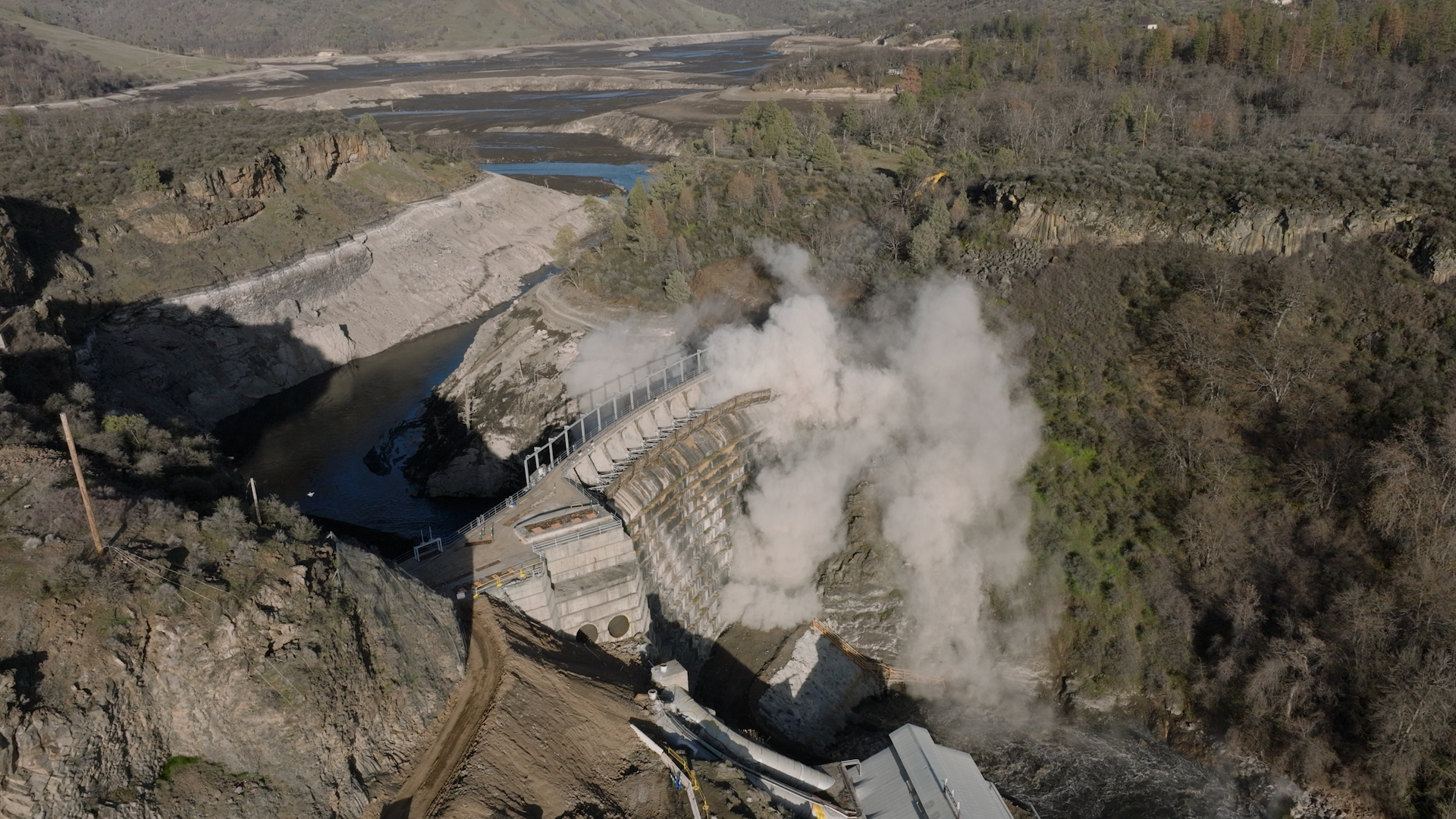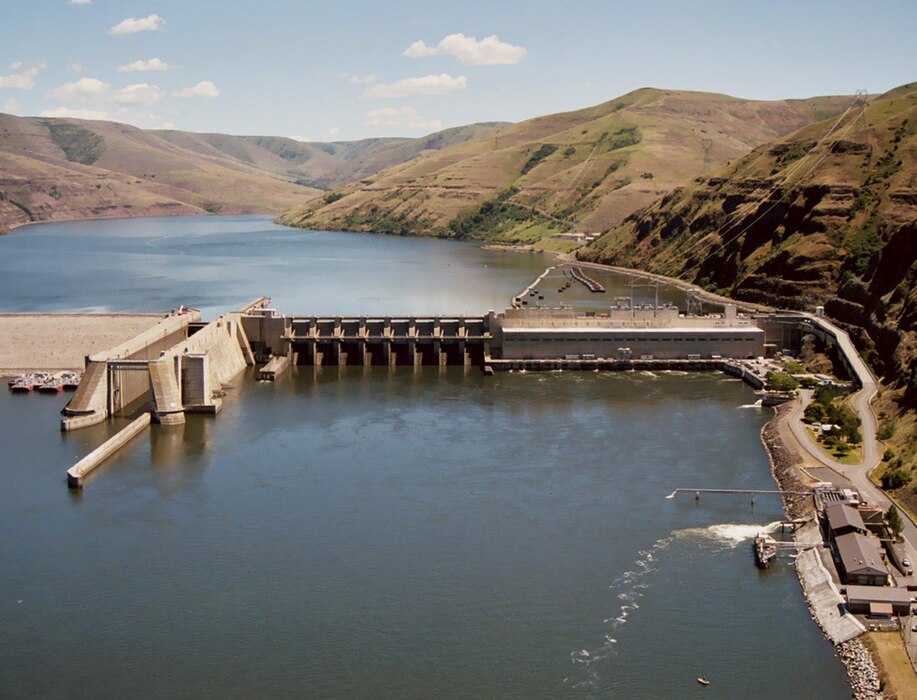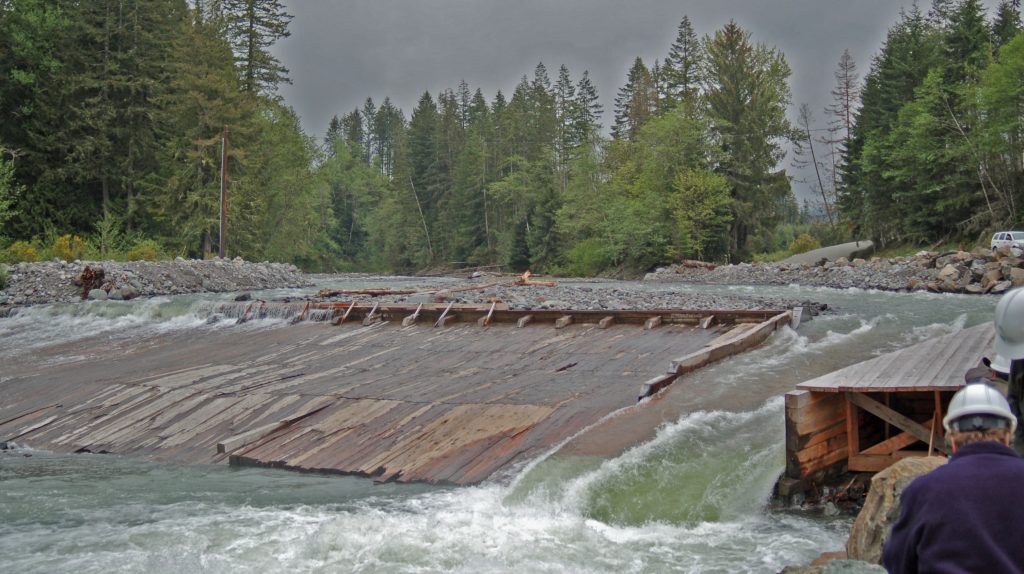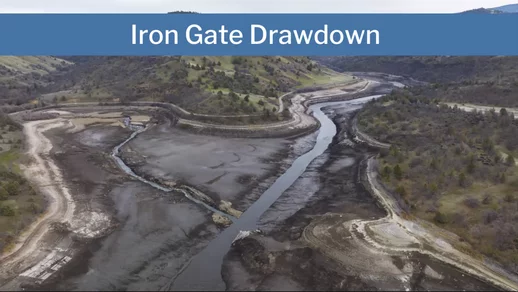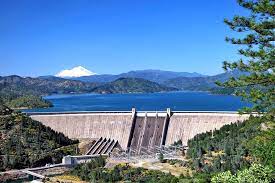Work Progresses On Removing Second Of Four Dams On Klamath River; Copco No. 1 Should Be Gone By End Of Summer
March 22nd, 2024
Following a successful test blast, the Klamath River Renewal Corporation will proceed with the removal of the Copco No. 1 Dam, the second dam to be removed as a part of the Klamath dam removal project. The Copco No. 1 Dam, constructed in 1918 for the sole purpose of hydroelectric power generation, has blocked fish passage for over 100 years and is expected to be fully removed by the end of August.
New Report By Group Favoring Breaching says Lower Snake Dams, Reservoirs Major Source Of Greenhouse Gases
March 22nd, 2024
A new report says that the four lower Snake River dams are not as environmentally friendly as dam advocates tout.
Due To New Agreement On Columbia/Snake River Salmon Recovery, Spill For Fish At Federal Dams Starts A Month Earlier
March 7th, 2024
Spilling instead of passing water through turbines at some Columbia/ Snake River dams to aid safe passage for juvenile salmon and steelhead began March 1, one month earlier than in past years, according to the U.S. Army Corps of Engineers.
Biden Administration, States, Tribes Formally Sign Billion-Dollar Columbia Basin Restoration Initiative To Recover Salmon, Steelhead
March 1st, 2024
The Biden administration, along with the governors of Oregon and Washington and leaders of four lower Columbia River tribes – the six sovereigns – formally signed an agreement last week that commits the federal government to as much as $1 billion to build infrastructure for eventual removal of four lower Snake River dams and to recover salmon and steelhead in the Columbia River basin.
Judge Says Northwest Dam Violating ESA By Harming Listed Salmon, Steelhead Needs To Go; Orders Breaching This Summer
February 23rd, 2024
A federal judge in Seattle last week ordered the owners of the Electron diversion dam on the Puyallup River in Washington to breach the dam by this summer because it violates the federal Endangered Species Act.
Initial Phase Of Klamath River Drawdowns Complete, Reservoirs Drained By Late Spring; Dam Removal Follows
February 23rd, 2024
The initial phase of reservoir drawdowns on the Klamath River – the draining of Iron Gate, Copco, and JC Boyle reservoirs – is now complete. Draining the reservoirs is a critical step on the path to deconstructing the remaining three Klamath River dams that are slated for removal later this year.
NOAA Status Review Says Sacramento Winter-Run Chinook Remain Endangered, Serious Threats From Climate Change, Disease
February 23rd, 2024
Though agencies and partners have pulled together to support the recovery of endangered Sacramento winter-run Chinook salmon in the last few years, NOAA Fisheries says the species is still in trouble, facing threats from climate change and other factors.
Basin Water Supply Dropping With Most Watersheds Well Below Normal, Setting Up Low Expectations For The Year
February 16th, 2024
After nearly a month of cold weather and heavy snow across the Columbia River basin, giving fisheries managers hope that there would be plenty of streamflow this summer for salmon and steelhead, February has been drier and warmer than normal, leaving the basin water supply at just 75 percent of average, as measured at The Dalles Dam.
Salmon Recovery MOU A Secret, Radical Deal? Republicans Say Yes, Administration Officials Say Brings Stability, Helps Fish, Contains Costs
February 2nd, 2024
Senior members of the Biden administration and Republican members of Congress painted vastly divergent pictures Tuesday of the agreement that could pause litigation over Snake River dams and salmon for the next decade.

